Photo Essay for the Special Initiative “From Fear to Resilience: Visual Storytelling of COVID-19 in Southeast Asia” by SEA Junction and Partners
| Title: | Umi and Ayu: A Mother and Daughter Bonded by a Hair Thread Amidst COVID-19 |
| Storyteller/ Artist: | Ayu Permata Sari |
| Photographers: | Ayu Permata Sari, Rachmat Adiguna and Firman |
| Place: | Kotabumi Selatan, North Lampung, Indonesia |
| Time: | May 2020 |
How strong is the bond between a mother and her child? The spiritual link formed from the time of conception, pregnancy and through delivery is something unique. Expression like “paradise is heaven is at mother’s feet” and “mother’s love is eternal” try to express the strength of that love.
As a daughter, Ayu feels the bond with her mother, whom she addresses with the culturally adopted Arabic term of Umi, is even stronger. Even if there may be disagreements and tensions, mothers and daughters share feelings and emotions and confide in each other. Ayu is the third of three siblings, who left Lampung in Sumatra for Jogjakarta in the island of Java, Indonesia in 2010 to study dance at the Art Academy there. At the time, the mother, felt worried as Ayu was just 18 years old, but she respected her wish to become a professional dancer. Since then, even after she finish her graduate and post graduate studies, Ayu rarely went back and when she did was just for a couple of weeks around Hari Raya as she was very much taken by her dance activities.
In January 2020, however, Ayu complied with her mother wish to have her spend time with her parents before one day she will decide to marry and concentrate on her own family. Ayu’s age is now 27 years old and this is considered a suitable age for marriage. And so Ayu went back to Lampung and only left her family home to attend performances, festivals and workshops in other locations. However, even those journeys ended when the Indonesian government enforced COVID-19 prevention and control measures and performances were postponed as all were encouraged to work and stay at home.
Ayu and her mother feel grateful that Ayu had already returned home before the epidemic started. Ayu feels blessed to be together with her parents and alleviate their household chores in these difficult time, especially since her parent are getting older. She helps clean the house, cook, and do the laundry and enjoy the closeness of her mother. Similarly, her mother is very glad that her daughter is home as otherwise she would have worried about Ayu being alone in Jogjakarta and without secure livelihoods after her performances had stopped. It was like she had received mystical insights to urge the daughter to come back so that they could cope with the epidemic together as a family.
This newfound mother-daughter bond is the subject of this visual storytelling essay. As an artist, Ayu never stops training and experimenting with her art. She explores new dance movements and choreographies in her home. She also started to use photography and video recording. Gradually she started to engage her family in the art activities to pass the time together, but also as a way to explain to her family what her profession is. Her extended family in North Lampung is not familiar with modern art and they still cannot see becoming artist as a profession as most youth normally wish to work as teachers and health workers or in the police.
The photos presented here are from one of these experiments. They show the mother-daughter bond and their undertaking domestic tasks together. The basic idea of tying the hairs, so that the hairs of Ayu and of her mother –in both cases wore very long– became one, is to symbolically express that the child is always tied to her mother like the umbilical cord at birth. It also signifies that the daughter learns from her mother how to behave in life. During the pandemic, Ayu gets a feeling of reassurance Ayu being close to her mother, and more generally her family. The fears can be shared and the presence of the parents somehow make the children feel safe, even if they know that the most at risk of infection are older people who need their children’s protection.
The portrayed images reflect routine daily household activities during isolation. The hairs are braided so that they look more orderly and tied at the lower end so that they give the two persons enough space to move and pose. The color of the hairband is orange because Ayu and her mother both like orange as a color of strong spirit and enthusiasm. The dress both Ayu and her mother wear is “daster” (house dress) because only rarely they go out of the house so they use daster all the time.
The series of photos presented here were taken during two days, and the shot sessions took about 3 hours a day. Most of the photos were taken with the timer and with the help of Ayu’s younger brother Rahmat Adiguna and the younger brother of his wife, my sister-in-law. For the places, many were suggested by Ayu’s mother as her favorite spots. Even if it took time to plan the photos and sometime we had to repeat because the result was not satisfactory, Ayu’s mother enjoyed being in this experiment with her daughter. She always had good laugh looking at the photos and wanted to take many more. The artistic photos became an expression of the love between mother and daughter that united then and sheltered them from COVID-19 by keeping them together at home.
Photographer & Storyteller
Ayu Permata Sari was born on 1992 in Kotabumi, North Sumatra, Indonesia and belongs to the local ethnic group of Pepadun. She started to study dance when she was nine years old and since 2000 she has been a member of the Cangget Budaya dance community. In 2010, she enrolled in the Institut Seni Indonesia (ISI or Indonesian Art Institute) in Jogjakarta, and followed graduate and post-graduate studies in choreography until completion in 2016. In the same year, she established the Ayu Permata Dance Project to support her performance activities. Among her recent works: in 2017, she followed a residency in Leuven and Brussels in Belgium as part of the Monsson Europalia Festival; in 2018 she was recognized for her art work “Kami Buta” (We are blind) at the Asian Technology Festival of Johor, Malaysia; and in 2019 she participated in a fellowship at Dance Nucleus in Singapore where she developed the performance TubuhDang TubuhDut later shown at the Jejak-Tabi Exchange in Yogyakarta and Kuala Lumpur and at the Spielart Theater Festival in Munich, Germany.
Organizers
“From Fear to Resilience: Visual Storytelling of COVID-19 in Southeast Asia” is a special initiative of SEA Junction and its partners Beyond Food, GAATW and Bangkok Tribune to promote an alternative narrative of survival, resilience and solidarity. See further www.seajunction.org
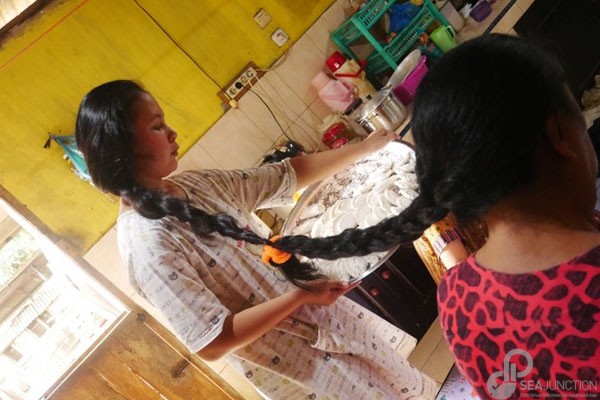
Ayu and her mother in the kitchen prepare “empek-empek” (fish-cake delicacy) in preparation of Hari Raya (Photo by Ayu Permata Sari)
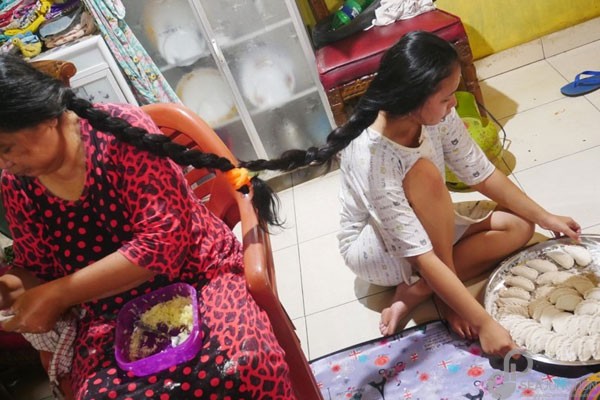
Ayu and her mother in the kitchen prepare “empek-empek” (fish-cake delicacy) in preparation of Hari Raya (Photo by Ayu Permata Sari)
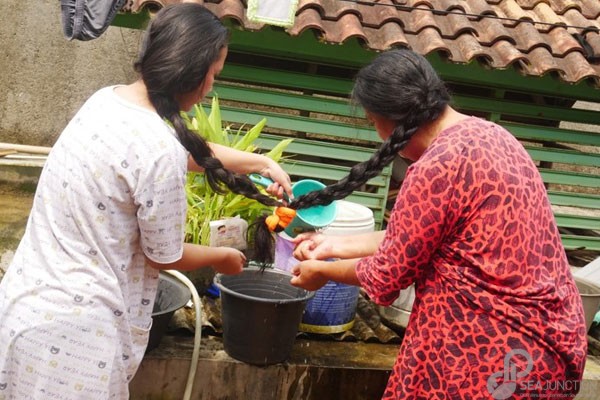
Ayu helps her mother to clean her hands (Photo by Ayu Permata Sari)
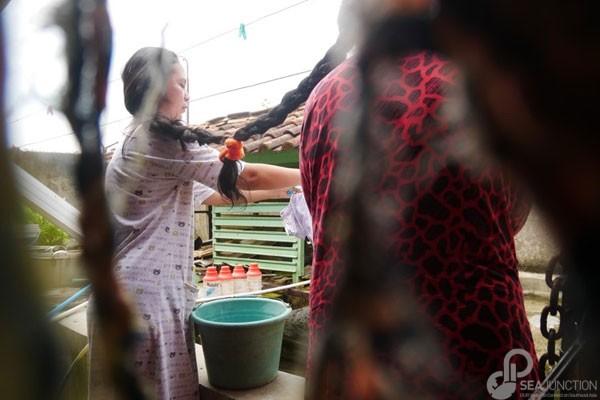
Ayu and her mother hang the laundry (Photo by Ayu Permata Sari)
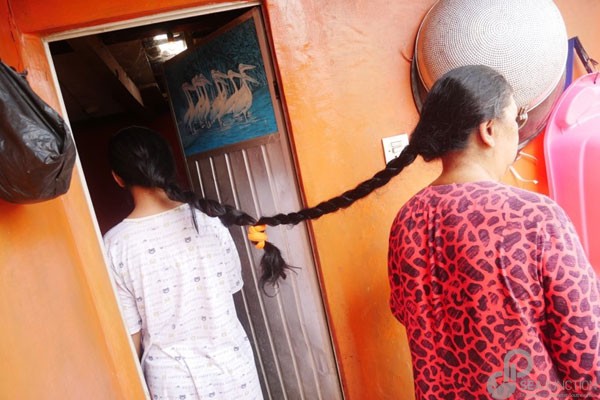
At the entrance of the washroom (Photo by Rahmat Adiguna)
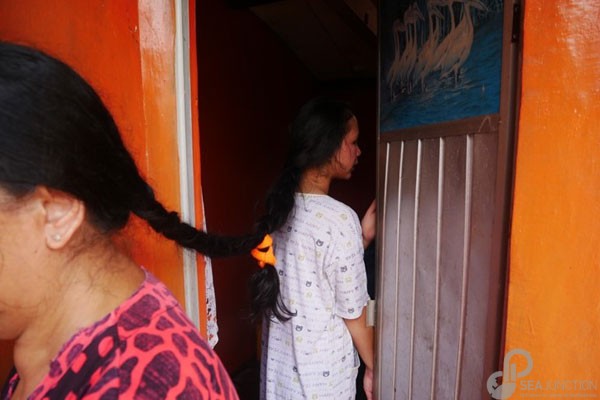
At the entrance of the washroom (Photo by Rahmat Adiguna)
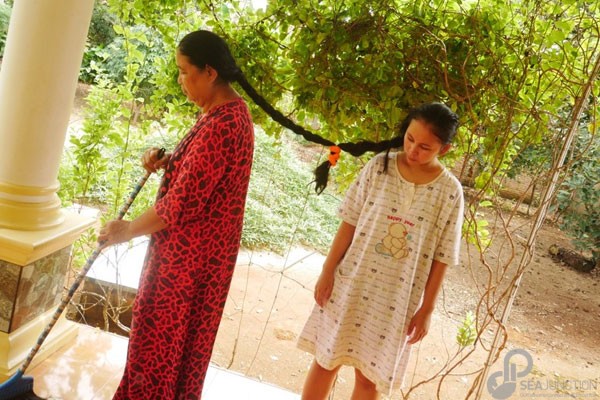
Ayu accompany her mother who sweep the terrace in front of the house. (Photo by Rahmat Adiguna)
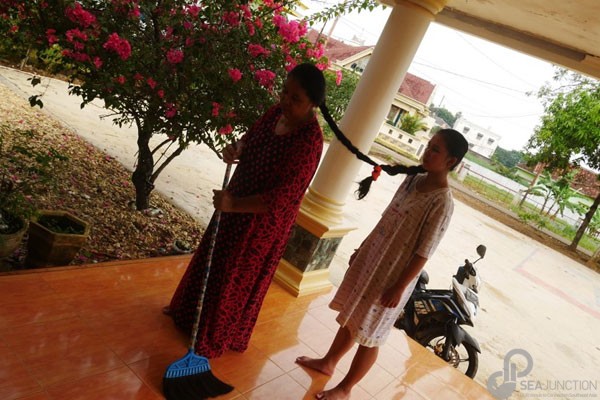
Ayu accompany her mother who sweep the terrace in front of the house (Photo by Rahmat Adiguna)
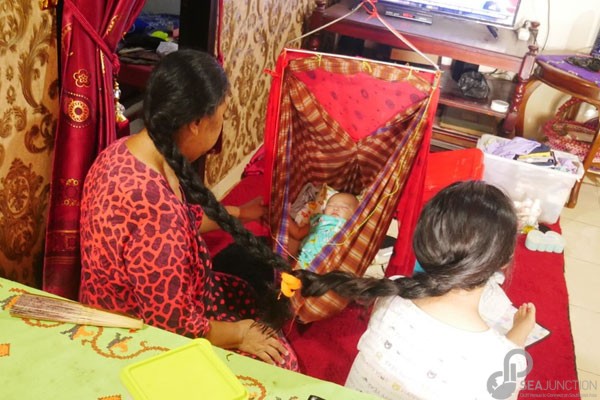
With the grandson (Photo by Rahmat Adiguna)
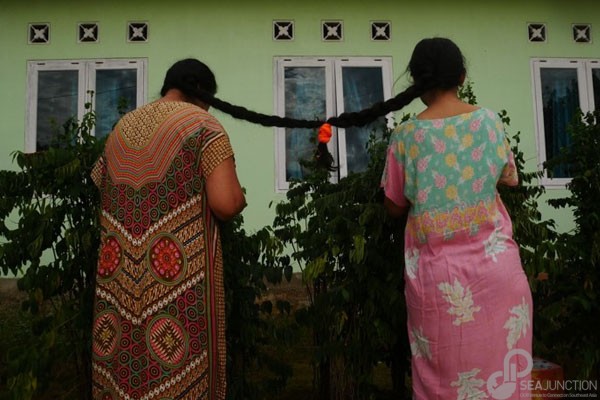
Picking up leaves for the cooking (Photo by Firman)
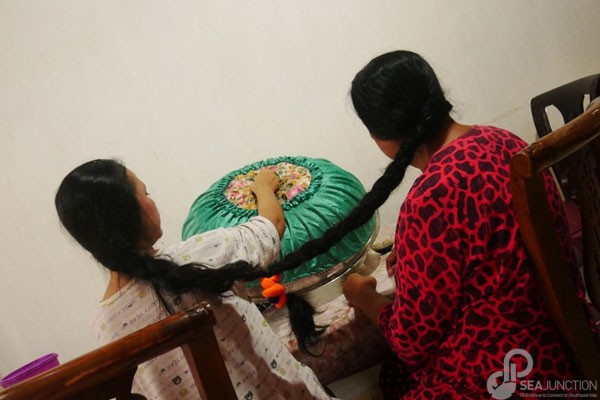
Ayu and her mother uncover the food on the table (Photo by Rahmat Adiguna)
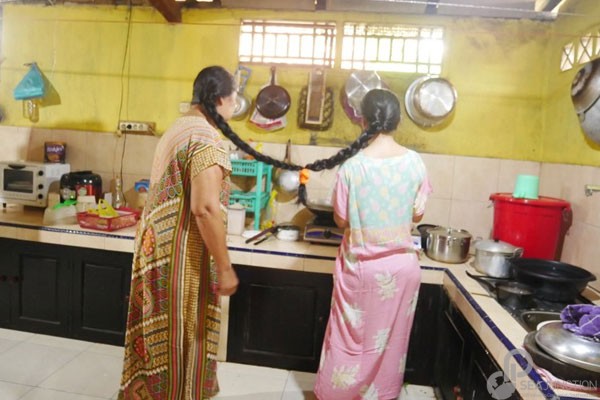
Cooking together (Photo by Ayu Permata Sari)
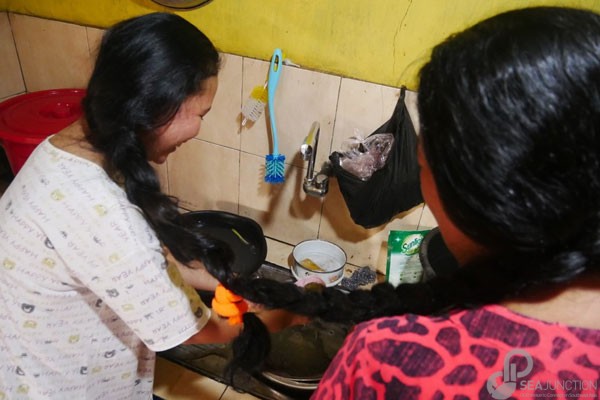
Washing the dishes (Photo by Rahmat Adiguna)
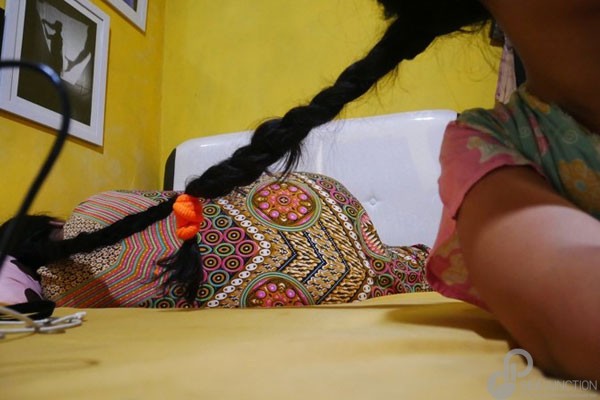
Taking a nap (Photo by Ayu Permata Sari)
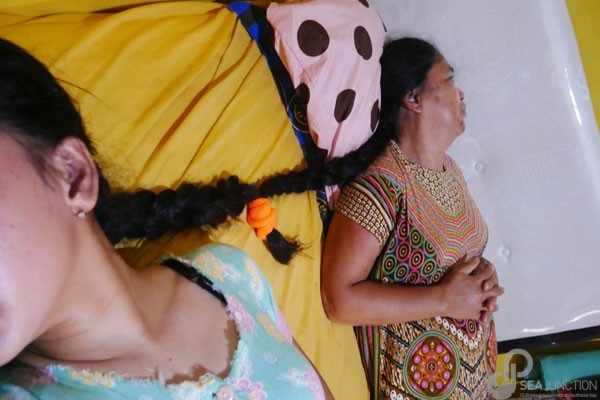
Sharing dreams (Photo by Ayu Permata Sari)
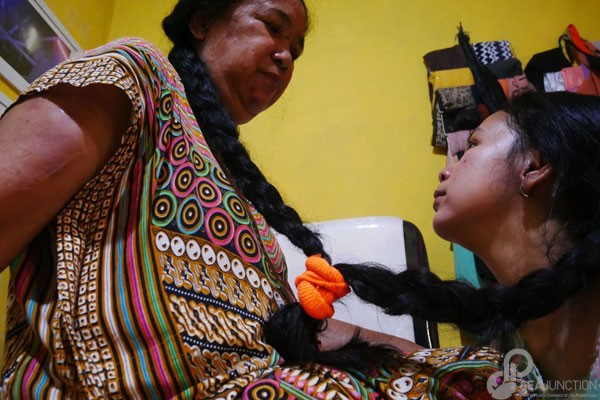
Mother-daughter bond (Photo by Ayu Permata Sari)
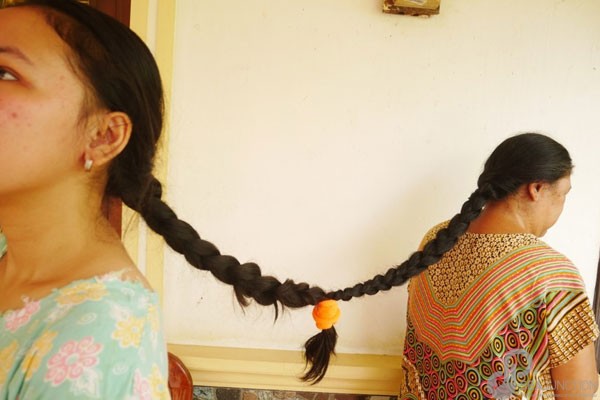
United by a thread of hair (Photo by Ayu Permata Sari)


